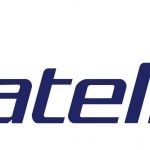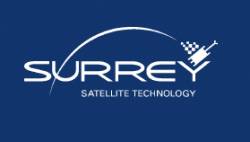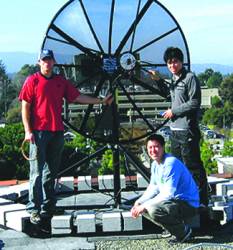The whole GNSS world should have a warm spot in its heart for centripetal forces.
After all, a centripetal force — in this case, gravity — is what keeps planets in rotation around our Sun and satellites, around the Earth.
Centrifugal force, of course, is what throws us off a merry-go-round or carousel. Centripetal force is what keeps us on board.
For those on a merry-go-round, the centripetal force is not gravity, but rather the tensile strength of our arms pulling us toward the center of rotation, at right angles to the motion of our seats.
The whole GNSS world should have a warm spot in its heart for centripetal forces.
After all, a centripetal force — in this case, gravity — is what keeps planets in rotation around our Sun and satellites, around the Earth.
Centrifugal force, of course, is what throws us off a merry-go-round or carousel. Centripetal force is what keeps us on board.
For those on a merry-go-round, the centripetal force is not gravity, but rather the tensile strength of our arms pulling us toward the center of rotation, at right angles to the motion of our seats.
How these forces appear to us and act on us has to do with frames of reference.
An inertial reference frame is one in which objects are at rest or else moving in a straight line at a constant speed — neither of which seems to describe the human condition very well.
Our presence on the merry-go-round puts us in a non-inertial reference frame in which the direction of our motion keeps changing.
We could say that the world’s GNSS programs are on a merry-go-round or, possibly, separate ones. And not just because they appear to be going in circles.
The programs are all in motion around the comforting notion that their own system does all the amazing things that GNSSes do.
To the extent that they are riding the same merry-go-round, the centripetal force that pulls them toward the center is the idea of interoperability, of a shared dynamic and way of doing things.
They are also being pulled in that direction by consumer preferences and market demands to have common designs that are, preferably, transparent to end users.
In the case of GNSS programs, centrifugal forces are the impulse to go it alone, to get a jump on the other systems through superior technology or, more likely, by trying to create competitive advantages in the marketplace.
That tension between centripetal and centrifugal forces lies at the heart of the cover article in this issue of Inside GNSS.
Collectively, the four GNSS programs have reached a critical mass of available resources and development activity. They are, taken together, accelerating into a future with new applications and products and services from which there is no practical way of turning back — whatever the risks and forced changes in how we do things that may inhabit that new world.
As our article describes, both centripetal and centrifugal forces are at work on the GNSS quartet. The temptation to shape regulatory measures, market initiatives, or technology development in ways that benefit one’s own program battles the idea that we are all in this together, or should be.
China’s publication of the technical specifications for one of its BeiDou signals-in-space seems a promising sign that centripetal forces are still at work there. So does the continuing multilateral forum supported by the International Committee on GNSS.
But many other indications exist that centrifugal tendencies persist among all of the GNSS providers.
If programs let go of their grip on the merry-go-round, if the attraction of interoperability weakens, they risk being thrown out of the GNSS reference frame.
Of course, they would at least stop going in circles.
But they could also find themselves wandering in exile in a unique, but non-standard world where their reach can never extend further than their grasp.





